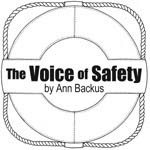Goodbye LORAN-C, Hello GPS

Ann Backus, MS is an Instructor in Occupational Health at Harvard School of Public Health, 665 Huntington Ave., Boston MA 02115, 617/432-3327, abackus@hohp.harvard.edu
If you have been fishing this winter, you will have probably used your new GPS-based navigation system for about four weeks by the time you read this article. If you have not been fishing, you may be installing your new system this spring.
On February 8, 2010, the Secretary of the Department of Homeland Security terminated the use of LORAN-C. All LORAN-C chains except the Russian-American and Canadian are now non-functioning.
The Long Range Navigation System was put into action in 1957 as a navigation and positioning system that served the “coastal confluence zone.” Out of a total of 24 LORAN towers, 18 were in the continental US and six in Alaska. There is some controversy that the LORAN system should be kept functioning as a back-up system to GPS, but the army and others have deemed it redundant to the superior GPS system.
Additionally, because of its low frequency radio signal of 90-110kHz, it is susceptible to inaccuracies caused by weather, magnetic storms, and the signal bouncing off the ionosphere at night. Purportedly, the absolute accuracy was variable, perhaps to as much as a mile.
Enter GPS, the Global Positioning System, also known as the NAVSTAR system, NAVigation Satellite Timing and Ranging. GPS relies on 24 satellites circling the earth and is not subject to interference by weather or the ionosphere. Its accuracy and ease of use have made GPS a common tool available on cell phones, car navigation systems, and hand held GPS receivers.
As a navigational and positioning tool it has accuracy to within 10 meters. For example, for fishermen and other mariners, EPIRB accuracy has been greatly improved by the addition of GPS capability – thus the GPIRB. The US Coast Guard can pinpoint a GPIRB signal to within 50 feet of its origin, thus greatly reducing search and rescue time.
Choices
In the switch-over to GPS navigation, fishermen have basically three choices. The simplest is a handheld GPS receiver. This would be a good choice for those fishermen who do not fish consistently on the same boat but for whom knowing their location in the event of an accident would be important. Presumably a VHF or portable VHF would be good companion equipment. The second choice is a fixed-mount GPS receiver and chart plotter. These range in price from $800 to $5000; mounts and cables often cost extra. Some come with the capability of installing NOAA charts specific to one’s fishing area; others now have charts installed. Garmin, for example, offers Blue Charts which are US NOAA-based and look just like the traditional paper charts. The third option is “Smart” antennas which can be mounted on the boat and connected to a computer, radar or plotter. These antennas are differential GPS (DPS) beacon receivers and result in data readings that are accurate to one to two meters.
In the documentation for GPS receivers, WAAS-capable is often mentioned. According to ESRI, a Geographic Information System software company, “The Wide Area Augmentation System, or WAAS, is being developed by the Federal Aviation Administration (FAA) to provide precision guidance to aircraft at airports and airstrips that currently lack these capabilities, using a system of satellites and ground stations that provide GPS signal corrections. Although not yet approved for aviation use, it is available to civilian users. WAAS is broadcast from geostationary satellites so the signal is often available in areas where other DGPS sources are not available.” Please refer to "http://www.esri.com/news/arcuser/0103/differential2of2.html" for this information and a more detailed discussion of DGPS. The WAAS will be the most accurate system available; one marine manufacturer advertises accuracy to within 3 meters with a GPS/WAAS system.
Consult your local marine supplier and/or US Coast Guard Marine Safety Office about the details and specifications of available, suitable, reliable GPS navigation equipment. Finally, high-tech navigational equipment is not a substitute for traditional navigational skills using compass and charts. Traditional skills should be maintained as a back-up in the event of a failure at the boat or at the system level.
